Two Type IDs for SWIPT and Only Zero or One Energy Beamforming Is Needed
Date: 2024.04.10 11:29
Author: Joffrey LC
Multiuser MISO Beamforming for Simultaneous Wireless Information and Power Transfer. Jie Xu et.al. IEEE Transactions on Signal Processing, September 2014 (pdf) (Citations 387)
Quick Overview
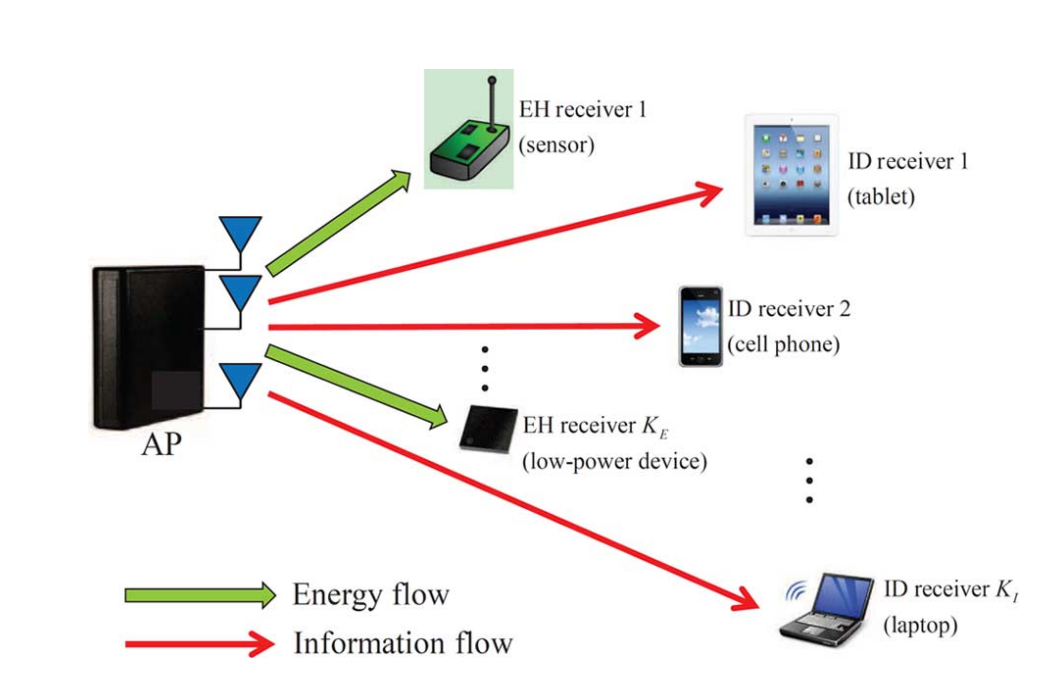
==Note that all the analysis is under the assumption of independently distributed user channels.==
- Type I: without the capability of cancelling the interference from energy signals.
- Type II: with the capability of cancelling the interference from energy signals.
- No dedicated energy beam is used for the case of Type I; and employing no more than one energy beam is optimal.
- Establish a new form of the celebrated uplink-downlink duality for the downlink beamforming problems and thereby develop alternative algorithms to obtain the same optimal solutions as by SDR
System model
the SINR of two types:
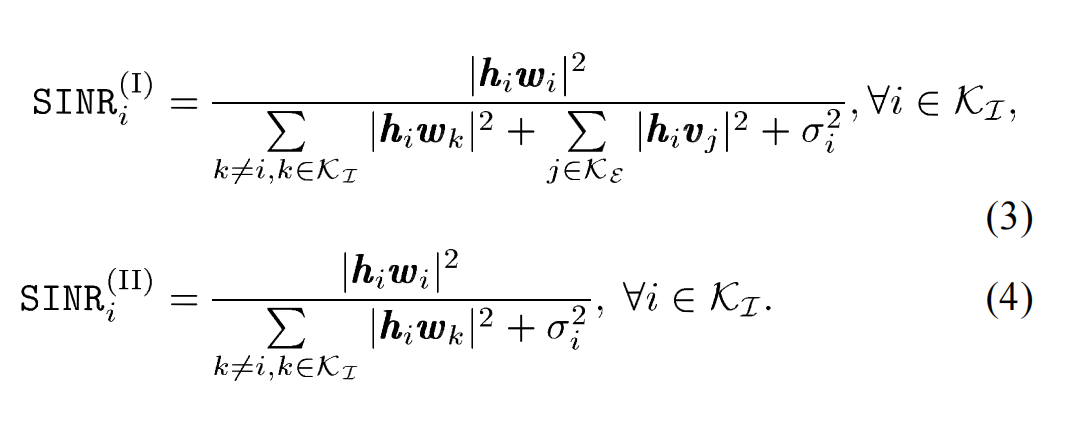
The two types can be formulated as:
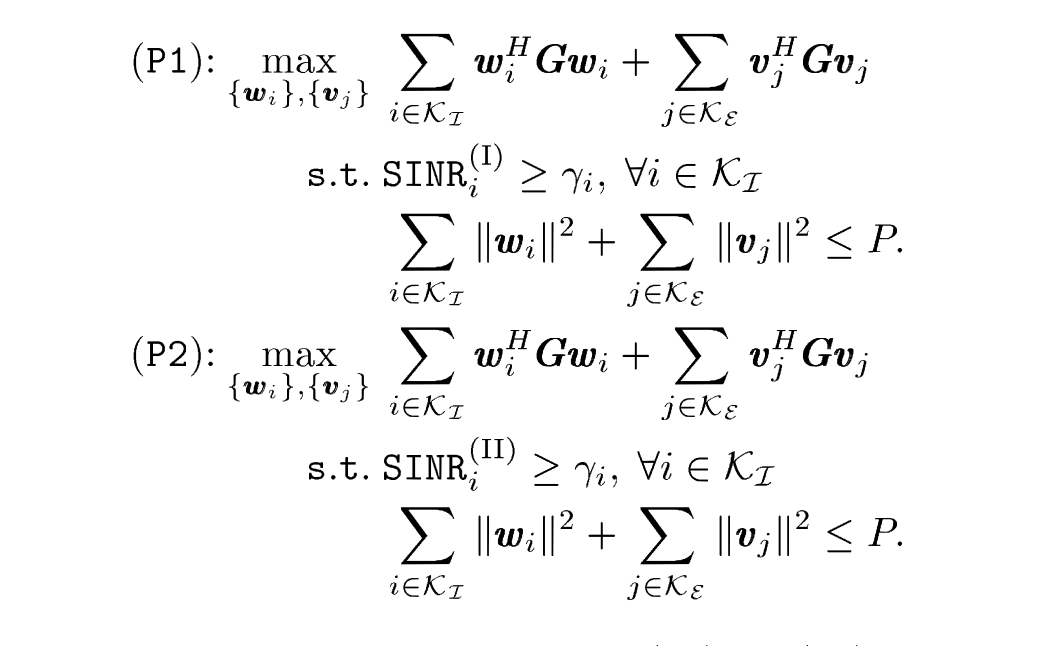
Both problems can be shown to maximize a convex quadratic function with being positive semidefinite, subject to various quadratic constrains; thus they are both non-convex QCQPs.
Check on their feasibility
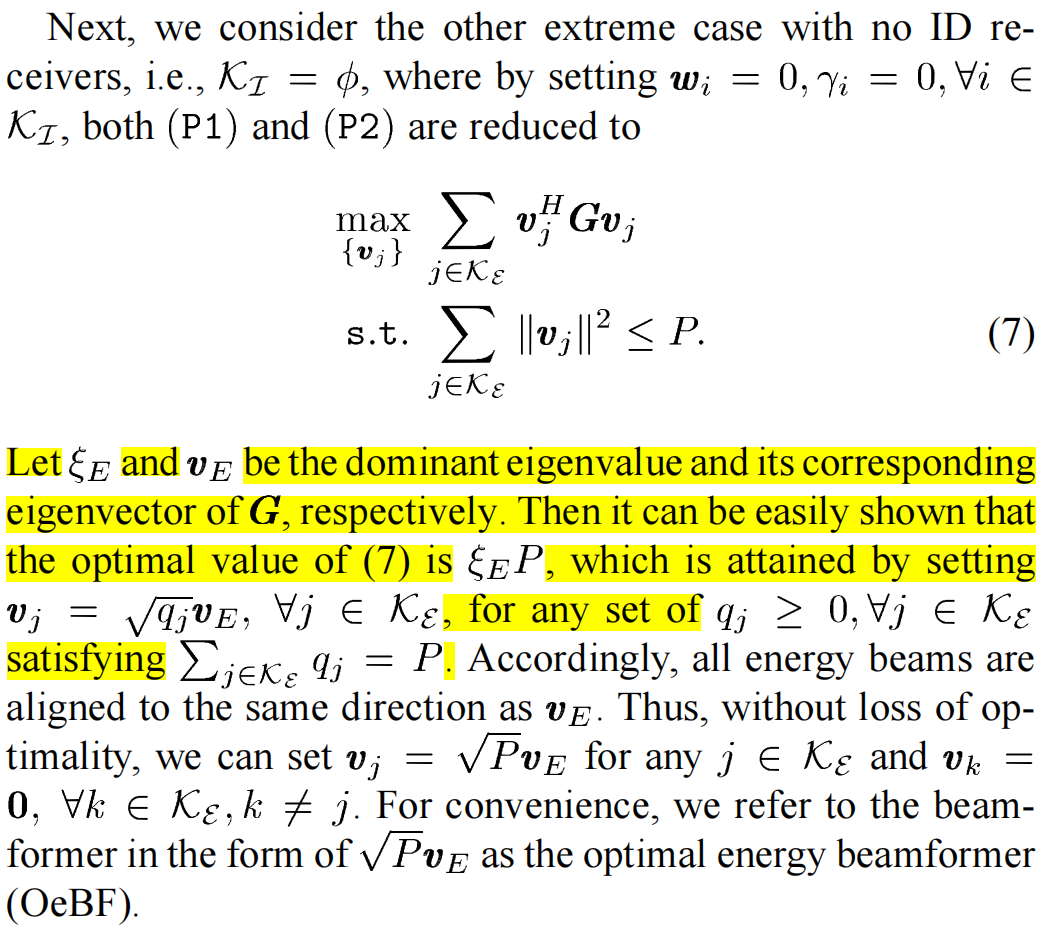
code varify
clc;clear;close all;
P = 1;
M = 10;
K = 4;
los = generate_channel_simple(M, K, -pi+2*pi*rand, -pi+2*pi*rand, -pi+2*pi*rand);
nlos = sqrt(1/2)*(randn(K, M)+1j*randn(K, M));
kappa = 0;
G_all = sqrt(kappa/(1+kappa))*los+sqrt(1/(1+kappa))*nlos;
G = 0;
for k=1:1:K
G = G + G_all(k, :)'*G_all(k, :);
end
[U, S] = eig(G);
optimal_w = U(:, 1);
optimal_w = optimal_w/norm(optimal_w)*P;
trace(optimal_w*optimal_w'*G)
close_form = S(1,1)*P
cvx_begin quiet
variable V(M,M) hermitian semidefinite
rece_power = 0;
rece_power = rece_power+ real(trace(V*G));
maximise rece_power
subject to
total_power = 0;
trace(V)<= P;
cvx_end
[U2, S2] = eig(V);
re_w = U2(:, end);
re_w = re_w/norm(re_w)*P;
re_power = trace(re_w*re_w'*G)问题的等价

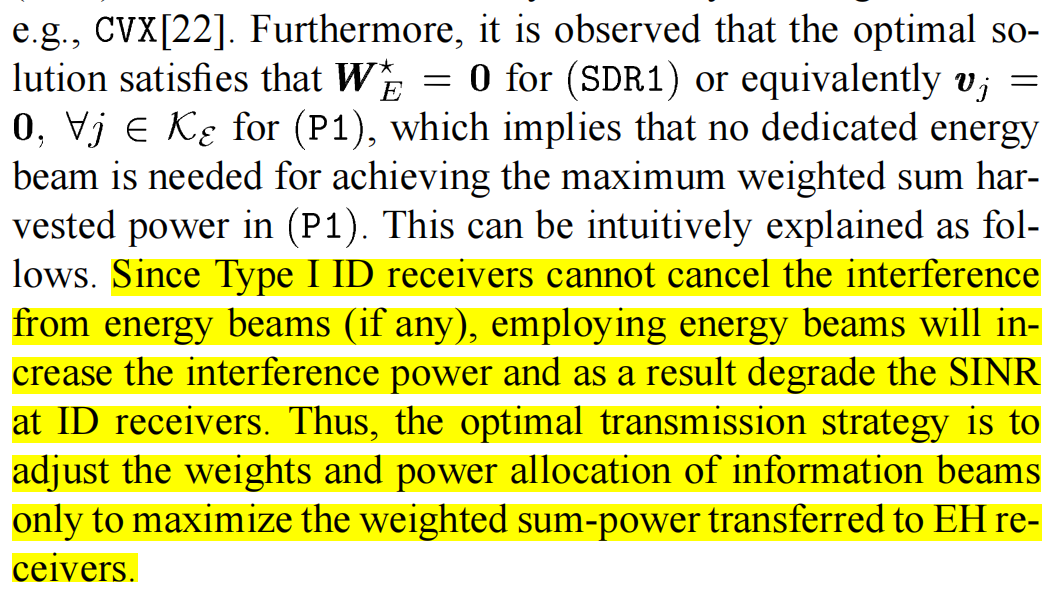

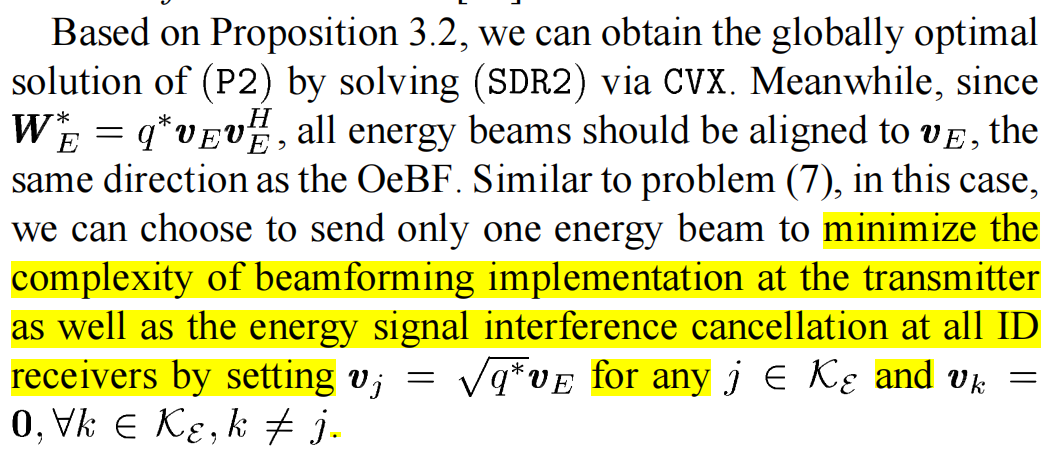
根据等价问题二,可以通过对偶来解决这个问题:
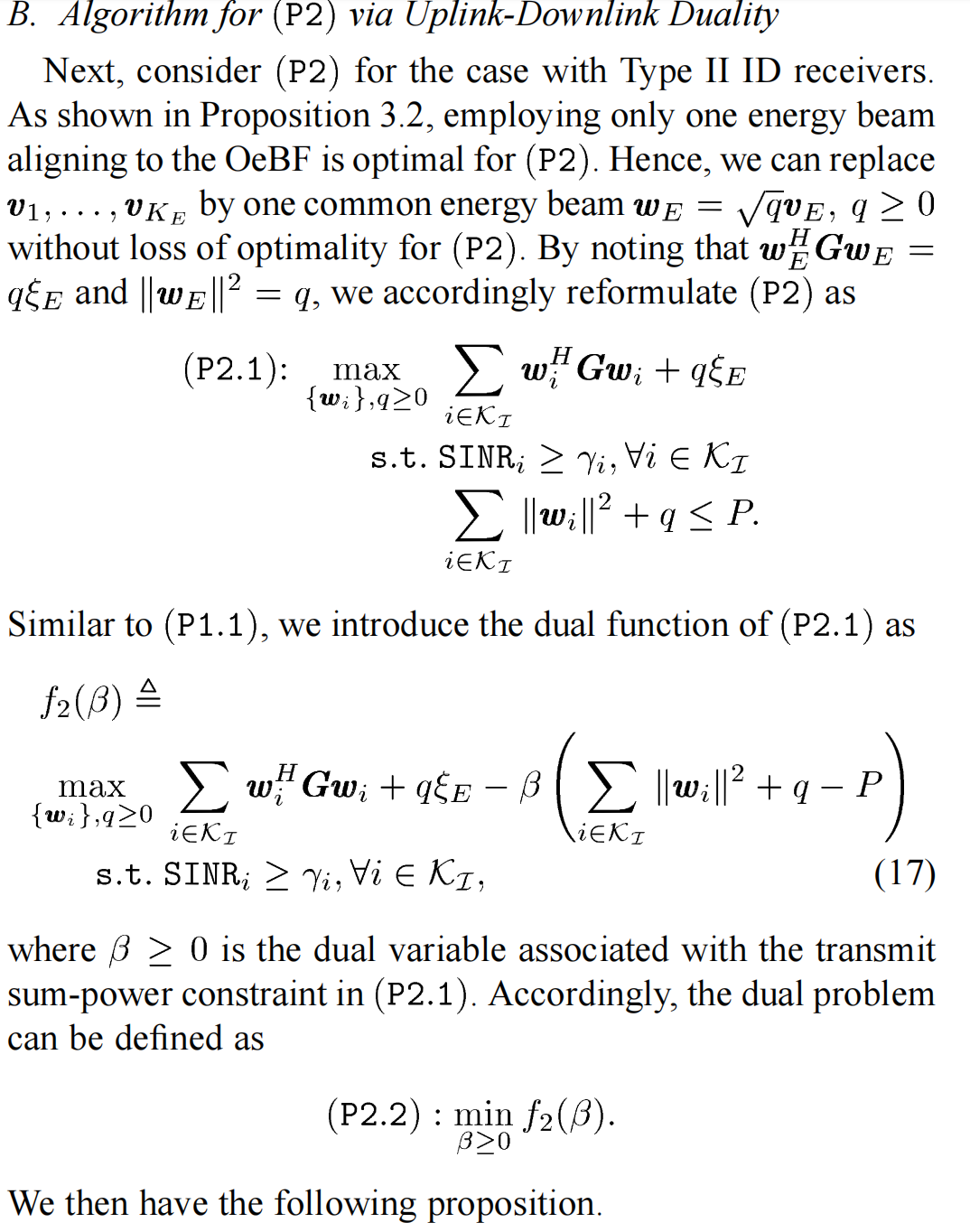
有意思的是,作者还对比了分离式设计:
- Type I: 先设计信息用户,再把剩下的功率全部用给能量。由于此时IDs不具备能量信号干扰消除,所以需要在发射端进行消除,所以使用了Null space方案。
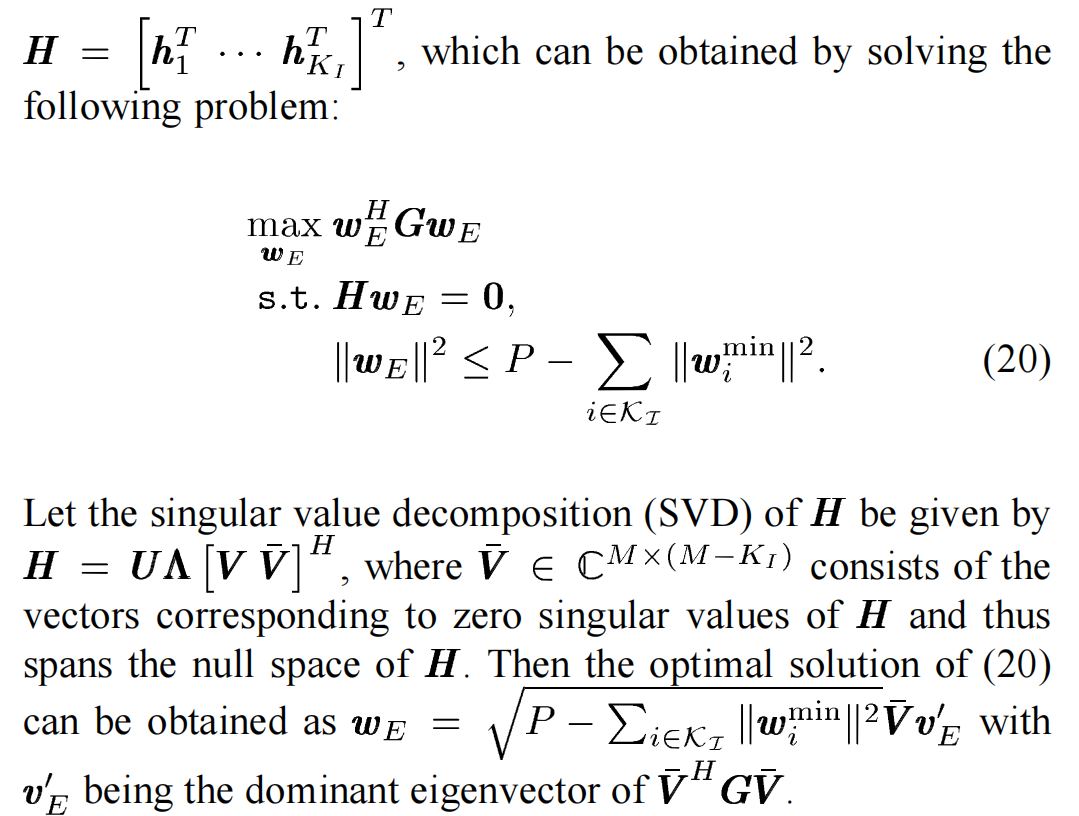
- Type II: 和上面类似,先满足信息用户,然后把剩下的功率全部给能量。由于此时IDs可以消除能量干扰,所以可以直接用OeBF方案。
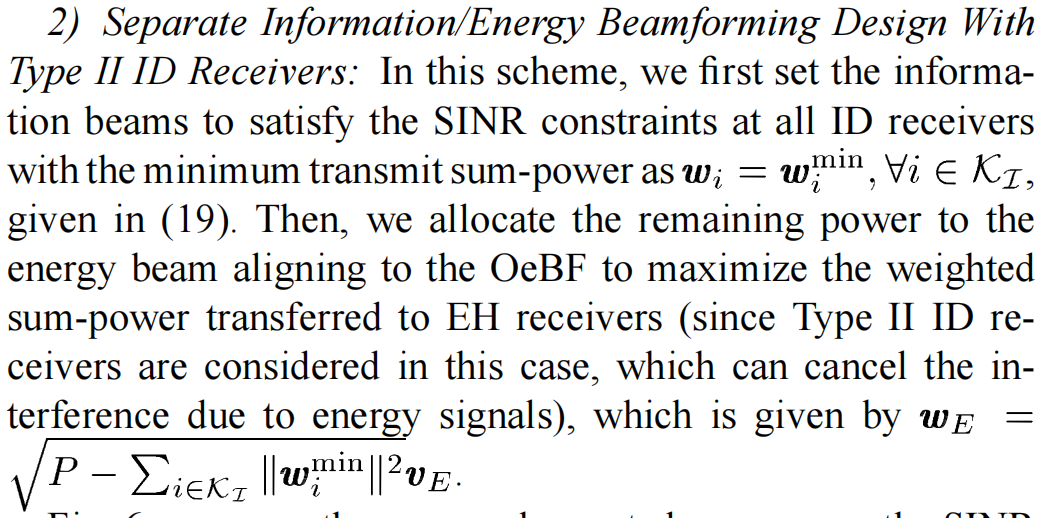
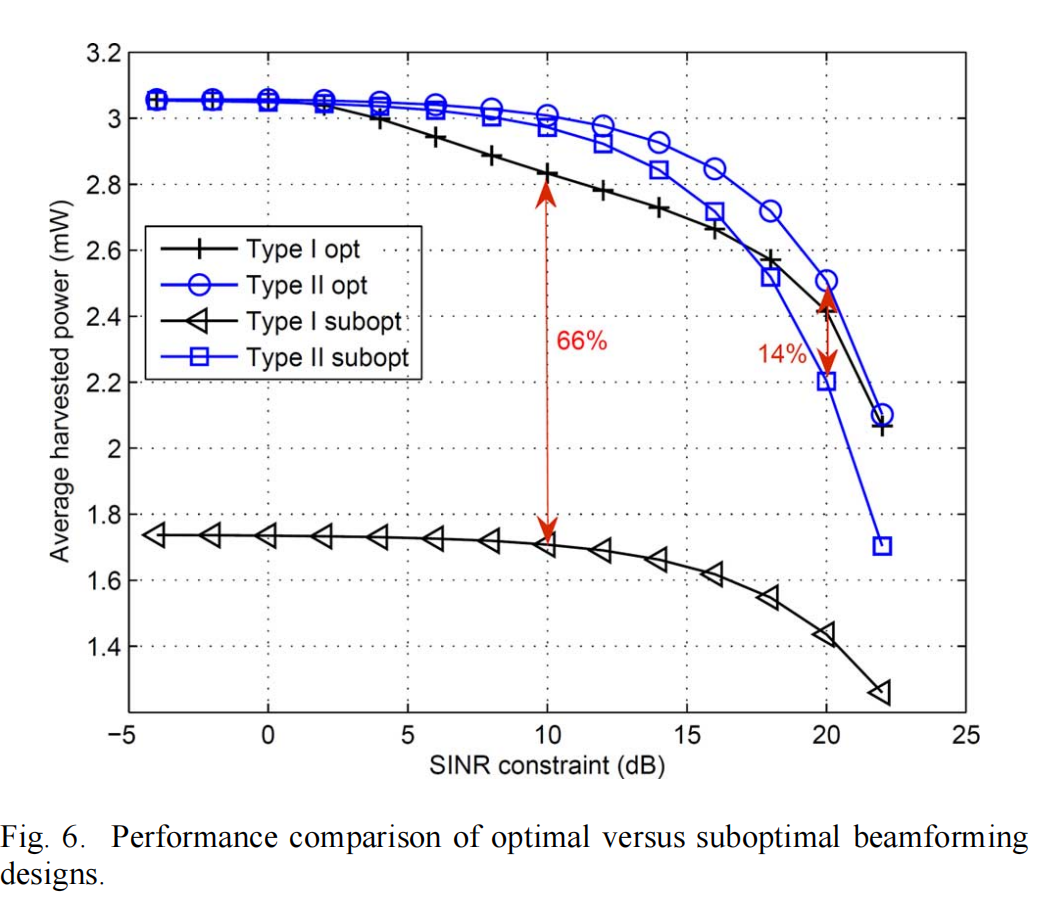
本文作者: Joffrey-Luo Cheng
本文链接: http://lcjoffrey.top/2024/04/10/dedicatedWETbeamforming/
版权声明: 本博客所有文章除特别声明外,均采用 CC BY-SA 4.0 协议 ,转载请注明出处!